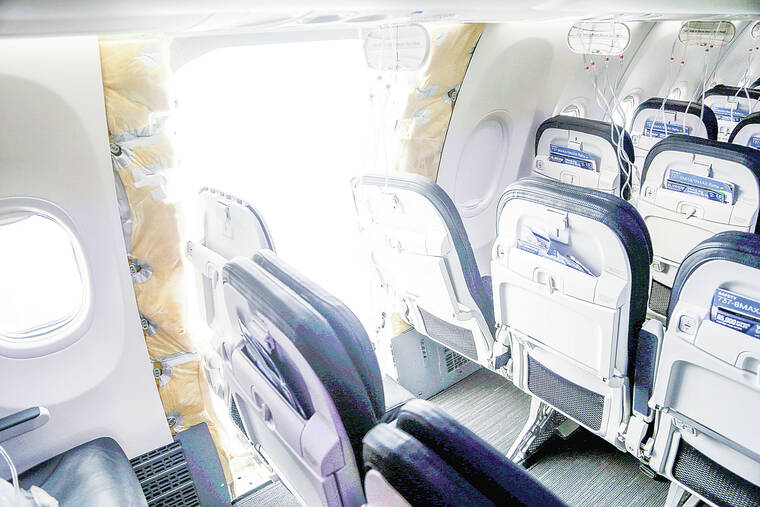Investigation into why a panel blew off a Boeing Max 9 jet focuses on missing bolts
The extended grounding of some Boeing 737 Max jetliners is adding to pressure on Boeing and the subcontractor that made the fuselage and installed a panel that blew out leaving a gaping hole in an Alaska Airlines plane last week.
Investigators know the sequence of events that led to the blowout Friday night, but they don’t know the cause. A key question is whether bolts used to help secure the panel, called a door plug, were installed. A National Transportation Safety Board investigator says the bolts have not been recovered and the agency won’t know if they were even in place until the door plug is examined in a laboratory.
ADVERTISING
Adding to Boeing’s problems, Alaska Airlines and United Airlines — the two U.S. carriers that fly the Max 9 — reported finding loose bolts and other hardware in other panels, suggesting quality issues with the door plugs are not limited to one plane.
The plugs are installed in Max 9 fuselages by subcontractor Spirit AeroSystems, which was spun off by Boeing in 2005. Spirit has a history of manufacturing problems, many uncovered in a U.S. House probe of two fatal crashes involving Boeing 737 Max 8 planes.
“The focus needs to turn to Spirit,” said former congressman Peter DeFazio, who chaired the investigating committee. “Boeing has been happy with the crappy stuff from Spirit because it’s cheap.”
The company said in a statement Monday that “quality and product integrity” are a priority. “Spirit is a committed partner with Boeing on the 737 program, and we continue to work together with them on this matter,” it said.
The process of inspecting Max 9s and returning them to service has been slower than Alaska and United had hoped. The Federal Aviation Administration grounded all Max 9s in the United States on Saturday until they could be inspected, but Boeing didn’t provide inspection instructions until Monday.
On Tuesday, the FAA said those instructions were being revised “because of feedback,” and it extended the grounding of the planes.
“The safety of the flying public, not speed, will determine the timeline for returning the Boeing 737-9 Max to service,” the FAA said in a statement.
However, the inspection delays threw airline schedules into turmoil.
United said it canceled another 170 flights Tuesday because of the grounding. Alaska said it scrubbed 109 flights because it couldn’t fly Max 9s.
The part that failed on the Alaska flight is installed on some Boeing jets when airliners don’t have enough seats to require more emergency exits. The plugs are lighter than an aircraft door, reducing the plane’s weight and saving fuel. They are common on cargo planes that have been converted from passenger use.


